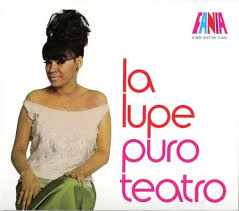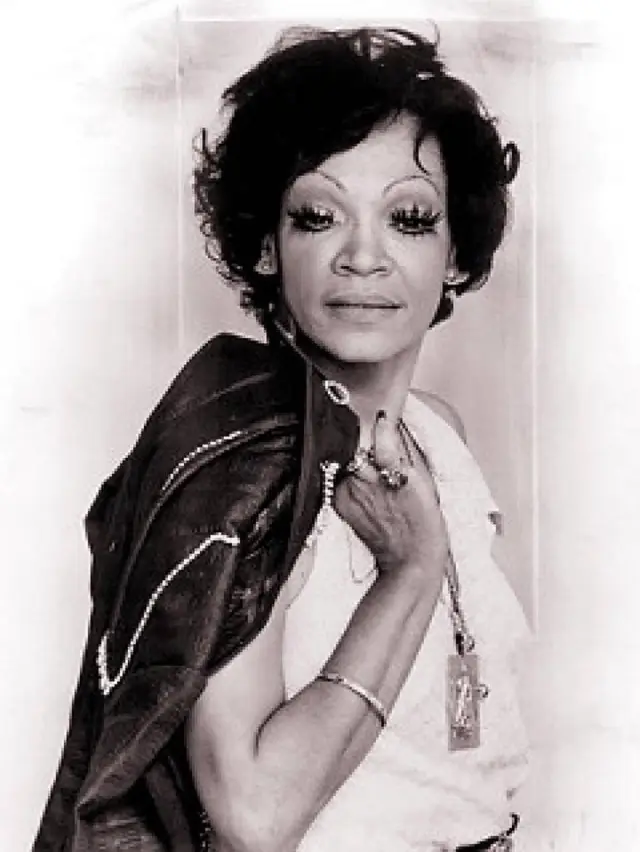
Fue un enigma, un ataque de nervios que marcó un hito en la historia de la salsa. Lupe grabo con Tito Puente cuatro discos que tuvieron un éxito inaudito y la catapultaron al estrellato.
La cantante cubana conocida como “La Lupe”, fue un enigma, un ataque de nervios que marcó un hito en la historia de la música bailable durante la época dorada de la salsa, para convertirse en la figuras más expresivas del género afrocaribeño.
Cultivo una voz privilegiada, y lo que más sorprende —más allá de las actitudes estrafalarias que la transformaron en leyenda— la ternura que imprimió a grandes temas de su cancionero como Puro teatro y Qué te pedí.
Hasta el día de hoy, la discografía de esa diva incontrolable, perteneciente al imperio de la Fania— sorprende con su variedad y elegancia, aunque dicen que en la década del 70 fue eclipsada por Celia Cruz “la otra reina” de la música tropical.
“Era una cosa increíble y tenía la habilidad de interpretar cualquier género musical”.”, al decir de Juan Moreno-Velázquez, profesor universitario y autor de la aclamada biografía Desmitificación de una diva: La verdad sobre La Lupe.
QUIEN FUE “LA LUPE”
Lupe Victoria Yolí Raymond nació en Santiago de Cuba el 29 de diciembre de 1939 y albergó desde pequeña la ambición de ser cantante, pero cursó estudios de magisterio antes de presentarse en los clubes nocturnos de La Habana.
Su admirador Pedro Almodovar incluyó en la banda sonora de sus películas algunas interpretaciones de la Lupe
Ella causó sensación en Cuba por sus obvios atributos como interprete, que brillaba con igual fulgor en tórridos boleros y alegres guarachas y por aquella peculiar costumbre de entrar en una especie de trance sobre el escenario.
De la noche a la mañana devino en una tormenta de pasión para el público, y como parte del ritual de la célebre artista, ya sobre la tarima, se arrancaba la peluca, atacaba al pianista y tiraba sus joyas a la gente en medio del asombro de todos.
La Lupe emigró a Estados Unidos en 1962 y el cantante y director de orquesta boricua Pete Bonet la conoció cuando trabajaba en Nueva York con el grupo del ilustre conguero nacido en la Isla caribeña Mongo Santamaría.
LA DESCUBRE TITO PUENTE
Después la descubrió Tito Puente y la primera colaboración entre ambos salió al mercado en 1965 con una nueva manera de interpretar el bolero romántico casi rabioso, el mismo registro emocional que empleó el resto de su carrera.
Los delirios sobre el escenario continuaron y cuando se separó de Puente rápidamente alcanzó una exitosa proyección como solista, para lo cual contrató a Pete Bonet junto a su director musical, Louie Ramírez, para que la acompañaran en vivo.
Locuras o no, a finales de los 60 y principio de los 70 fue la cúspide comercial de la cantante, cuando se dio a conocer como “the queen of Latin Soul” con discos clásicos y ganancias millonarias, gracias a canciones como La tirana y Fever.
Aun así, no supo aprovechar su éxito y un segundo matrimonio fallido, su entrada en la santería y la pésima administración de su fortuna la dejaron en la bancarrota y de la misma manera que logró la fama, cayó a lo más bajo.
A fines de los 80, luego de apostar por el cristianismo grabó discos de música religiosa, pero falleció en el Bronx, Nueva York, de un ataque al corazón en 1992, a la edad de 52 años y lo hizo predicando la palabra de Dios, y era muy feliz.

“LA LUPE” WAS AN ENIGMA, ONE OF THE MOST EXPRESSIVE SINGERS OF THE AFRO-CARIBBEAN GENRE. PHOTOS.
She was an enigma, a nervous breakdown that marked a milestone in the history of salsa. Lupe recorded four albums with Tito Puente that were unprecedentedly successful and catapulted her to stardom.
The Cuban singer known as “La Lupe” was an enigma, a nervous breakdown that marked a milestone in the history of dance music during the golden age of salsa, becoming one of the most expressive figures of the Afro-Caribbean genre.
She cultivated a privileged voice, and what is most surprising—beyond the eccentric attitudes that transformed her into a legend—is the tenderness she imprinted on great songs in her songbook such as “Puro teatro” and “Qué te pide.”
To this day, the discography of that uncontrollable diva, belonging to the Fania empire, surprises with its variety and elegance, although it is said that in the 1970s she was overshadowed by Celia Cruz, “the other queen” of tropical music.
“She was an incredible thing, and she had the ability to interpret any musical genre,” said Juan Moreno-Velázquez, university professor and author of the acclaimed biography Demystifying a Diva: The Truth About La Lupe.
WHO WAS “LA LUPE”?
Lupe Victoria Yolí Raymond was born in Santiago de Cuba on December 29, 1939, and harbored ambitions of being a singer from a young age, but she studied to become a teacher before appearing in Havana’s nightclubs.
Her admirer, Pedro Almodovar, included some of Lupe’s performances in the soundtracks of his films.
She caused a sensation in Cuba for her obvious attributes as a performer, who shone with equal brilliance in torrid boleros and cheerful guarachas, and for her peculiar habit of entering a kind of trance on stage.
Overnight, she became a storm of passion for the public, and as part of the ritual of the celebrated artist, already on the On stage, she would rip off her wig, attack the pianist, and throw her jewelry at the audience, to everyone’s amazement.
La Lupe emigrated to the United States in 1962, and Puerto Rican singer and bandleader Pete Bonet met her while working in New York with the group of the illustrious conguero born on the Caribbean island of Mongo Santamaría.
TITO PUENTE DISCOVERS HER
Later, Tito Puente discovered her, and their first collaboration was released in 1965, with a new way of interpreting the almost rabid romantic bolero, the same emotional register she used for the rest of her career.
Her on-stage raves continued, and when she separated from Puente, she quickly achieved success as a solo artist, for which she hired Pete Bonet and her musical director, Louie Ramírez, to accompany her live.
Crazy or not, the late 1960s and early 1970s were the singer’s commercial peak, when she began to Known as “the queen of Latin Soul,” she earned millions in classic albums and earned millions thanks to songs like “La tirana” and “Fever.”
Even so, she failed to capitalize on her success, and a failed second marriage, her entry into Santeria, and the poor management of her fortune left her bankrupt, and just as she achieved fame, she fell to rock bottom.
In the late 1980s, after embracing Christianity, she recorded religious music albums, but died in the Bronx, New York, of a heart attack in 1992, at the age of 52. She did so preaching the word of God, and she was very happy.

Agencies/ Wiki/ Arrajatabla/ Alberto Denis/ Internet Photos/ Arnoldo Varona.
www.TheCubanHistory.com
THE CUBAN HISTORY, HOLLYWOOD.



